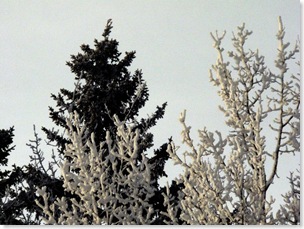There were five of us in church this morning–making the cavernous cathedral seem like a grand-canyon, and we few, appear like specks–pack-mules, traversing a dry riverbed at the bottom of mile-high rock walls.
These days I prefer the stark emptiness of the "early-early" service at All Saints. It’s a kind of Lenten solitude.
In other jurisdictions there will be praise songs in the air, motivational sermons, all good and uplifting. But I prefer the starkness as it reminds me that not everybody has that connected anchor of hope. That some are depleted. And that many have had orthodox faith peeled away through a kind of systemic spiritual violence. It also reminds me that more often than not, there is more genuine life and living outside the sanctuary than within.
The dark sanctuary helps me think about an eight year old girl who met all the criteria of being a perfect Christian. Who at a very early age understood the churchly concepts of regeneration, conversion, sanctified growth, and the rest of it. Who recognized the end product of being right–righteous–because she carried all the signs with ease.
And now I’m thinking about that same girl, who, in the midst of being in a three-year haul of chronic neurological pain, was introduced to the possible notion that her experience of pain is linked to an existential signal of her place upon the unnamed Christian-morality-continuum. That is, that highly subtle notion of linkage between ethical purity and thought-piety, and God’s approval, or disapproval. All this readily confirmed through a spiritual language with which she was easily conversant. And now I’m thinking of this same little girl, who, following the lead of her parents, underwent every possible elder-prayer, hand-laying gathering, anointing, purifying, home purging technique, and yet, remained in relentless pain.
Twelve years forward and now I’m reading notes from a young woman, who while studying in the UK is exposed to a plurality of faiths and non-faiths. Forward another year and now I’m listening to the same young woman, almost a year back into chronic neurological pain, a year of "forced" reflection of every belief she had osmotically held, naturally examine a childhood black cloud of self incrimination. A cloud she now rightly identifies as spiritual violence, unwittingly perpetrated by well-meaning adults.
It may be denied in some circles, but there is such a thing as spiritual violence. And whether it’s well-meaning or structurally Machiavellian, harm is done.
Harm is done–whether it’s the perennial patriarchal bias that still erects plexiglass walls around women, or whether it’s the double-bind–"be" but don’t "act"–placed upon lesbian and gay parishioners, or whether it’s prescriptive modes of living and praying that assure your well-being, or whether it’s the passive aggressive withdrawal of the "church body" from anyone who begins moving through a quest of questioning Christian presupposition–dogmas.
Spiritual violence, like all violence, justifies itself by creating a myth of the blame-worthiness of the victimized. Women are assessed as prideful in their "demands" for equality, within the structure. Gays are kept under surveillance for any signs of public affection, immediately construed as flaunting, or attempted "normalization." And questioners, who dare put everything on the table for reevaluation through a new lens, are charged with faithlessness and apostasy.
 The church, whether modern-mega, or traditional, sees these as threats and like any nation-state moves to silence the unpatriotic. (It remains to be seen whether the "emergent church" is capable of such incorporation.)
The church, whether modern-mega, or traditional, sees these as threats and like any nation-state moves to silence the unpatriotic. (It remains to be seen whether the "emergent church" is capable of such incorporation.)
Emerging from my dark canyon–now, from my chair at a riverside coffee house, I watch the sun-soaked air plunge its hands into bags of ice crystals and throw them high in the air, transforming all those frost-flecks into diamonds, as they descend. Their is much hope in that. And there is much hope in the forgiveness offered by that young woman. A young woman, who like myself, loves hoarfrost on bare branches, and their black-capped chickadee visitors.




